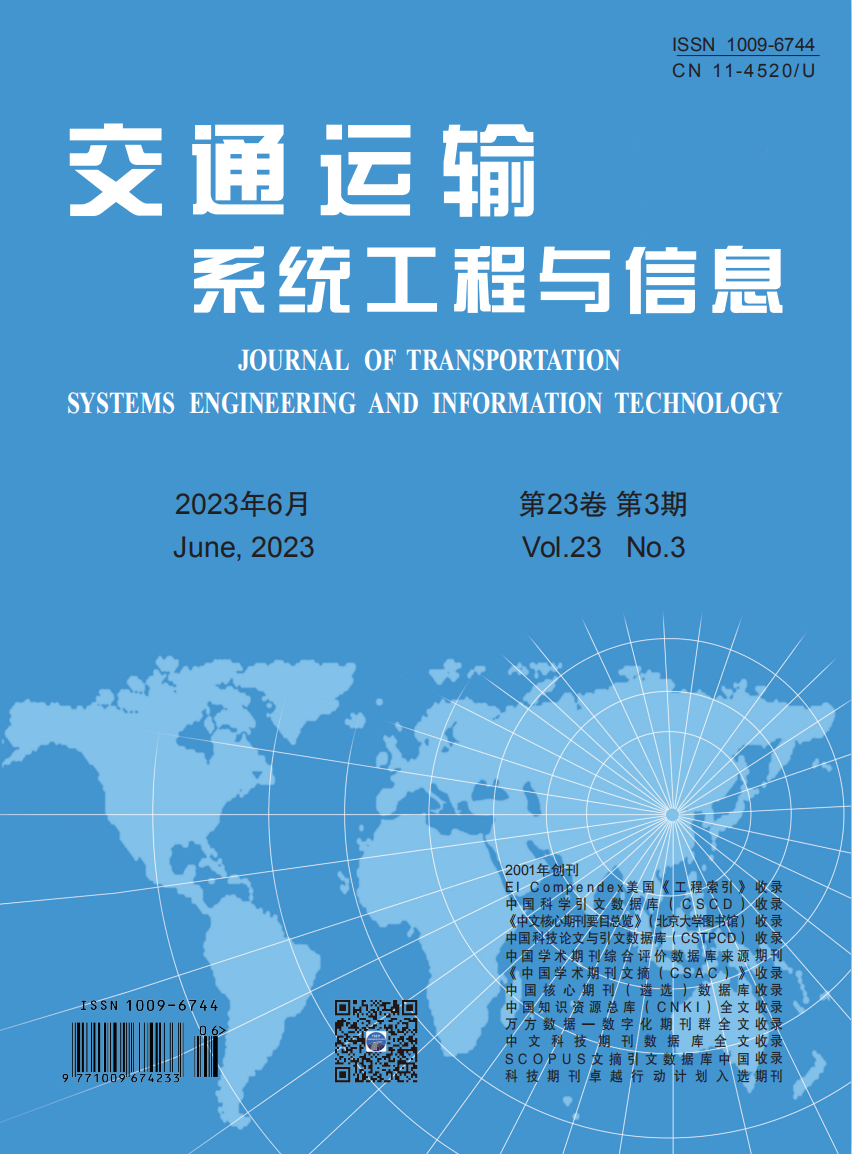|
|
Urban Transportation Management from Perspective of General
Spatial Equilibrium: Review and Trend
XU Shu-xian, LIU Tian-liang, WANG Ting, XIAN Kai, HUANG Hai-jun, MA Shou-feng
2023, 23(3):
6-19.
DOI: 10.16097/j.cnki.1009-6744.2023.03.002
Urban transportation is the foundation of urban social and economic activities. Coordinated development of
urban transportation and land use is of great practical significance to reduce traffic congestion, optimize the urban
spatial structure, and realize sustainable urban development from the root of problems. With the development of urban
society and the advancement of urbanization, as well as the low-carbon, green, and intelligent development trend of the
transportation system, traditional urban transportation strategies purely focusing on supply or demand management
cannot meet the needs of rapid urban development and the aspirations of the people to live a better life. Urban
transportation management needs to focus on comprehensive governance of employment, housing, and transportation and dynamic equilibrium of supply and demand, to realize the coordinated and integrated development with urban
spatial layout and land use. Based on the general spatial equilibrium theory, the literature on urban travel behavior
analysis, travel demand management, transportation infrastructure supply, and supply-demand coupling strategies are
systematically reviewed in this paper. Besides, the theoretical models, methods, and research problems in this area are
also reviewed. It is found that the existing models cannot describe the dynamic process of urban development and the
reality of China, and the related studies still focused on the traditional transportation management research problems. In
the context of urban renewal, new territorial space planning systems, new transportation technologies and travel
patterns, and big data, it is suggested that there is great potential for urban transportation management research from the
perspective of general spatial equilibrium. It needs urgently a breakthrough in the corresponding theories and methods.
Further research directions are proposed: the first is to analyze the influencing factors of residents' utility in the process
of urban development, and put forward household utility decision-making theories and models under the integrated
transportation and urban development; the second is to do activity/travel behavior analysis and management based on
the data-driven and theory-driven methods; the third is to explore the impact of new technologies and modes of the
transportation system on urban spatial structure and traffic characteristics, and study urban transport management issues
for the era of digitization and intelligence; and the fourth is to explore theories and methods of urban space reshaping
guided by transportation under urban renewal.
References |
Related Articles |
Metrics
|


